A headshot background is almost as important as the subject. Learn about the different options and get tips for incredible headshots.
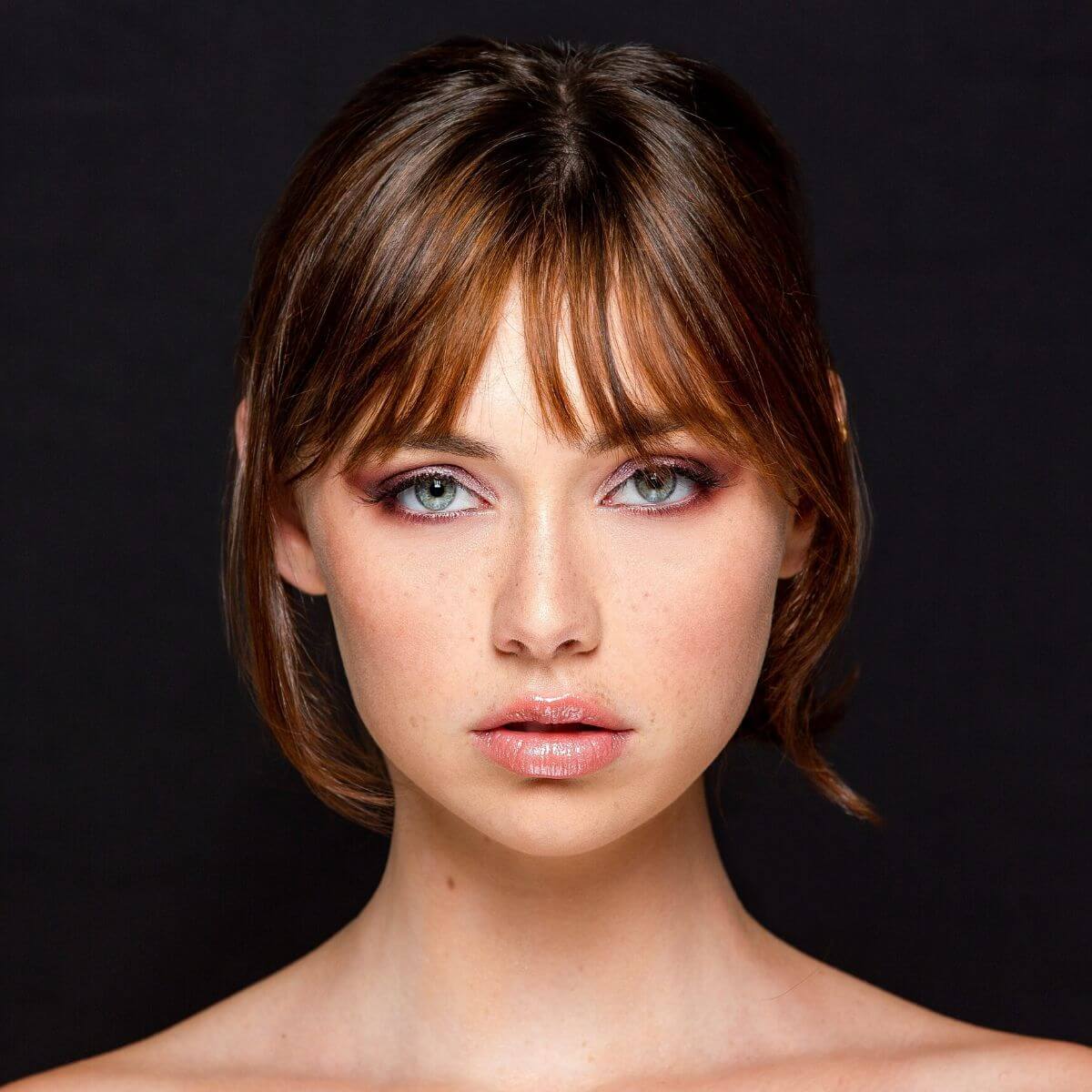
Actors, business owners, consultants, finance professionals, and students all need professional headshots.
The most common use is for a profile picture, which is the first impression.
The background is an essential aspect.
As the photographer, you must choose a background that enhances your subject. It must also fit well with the purpose of the headshots.
The following are professional headshot background ideas.
You’ll learn the best options and when and why you should use one over another.
White background
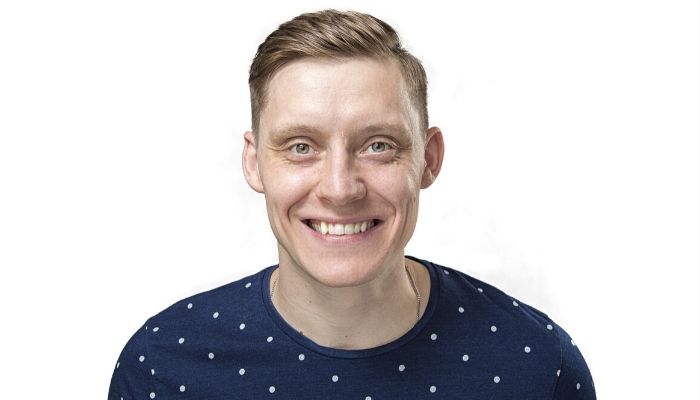
A white background is also called a high-key background. It offers a clean and distraction-free headshot.
It’s the most versatile background because it works online, printed, and on ID cards.
Your subject must wear darker clothing to create a contrast from the background.
Also, focus on capturing good lighting, exposure, and white balance.
Black background

A black headshot background offers a cinematic, dramatic, and moody look.
It can be an excellent background for actors, models, and corporate professionals.
If your subject wants to stand out, a black background is unique and will do the job.
It’s best to wear colors because they’ll pop and look more vibrant.
Use rim lighting to separate the subject from the background with black clothing or hair.
When using a black headshot background, lighting is essential. Make sure there’s enough light on the subject’s face and hair.
You can also use Rembrandt lighting to make the headshot more moody.
Grey background
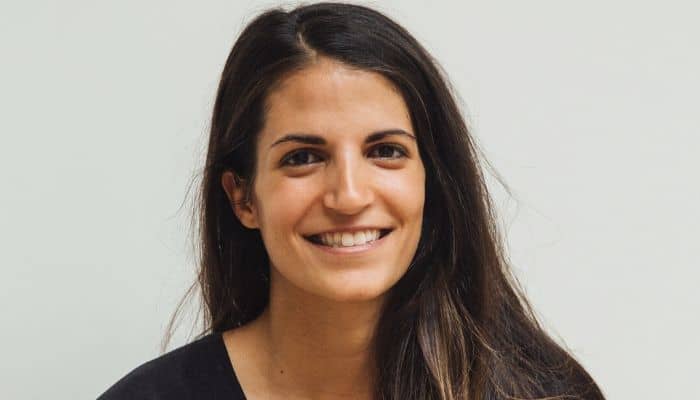
Grey is the perfect middle ground between white and black.
It’s the most versatile headshot background, as everyone can use it.
You can use light or dark grey depending on the mood of the headshot. The darker the grey, the moodier it’ll be.
Grey backgrounds are timeless and classic. They work for formal and casual looks.
Nature background

Nature acts as a beautiful background. There are many choices, as you can use mountains, trees, flowers, or water.
It’s best for casual headshots because it makes your subject more approachable.
Since the main focus is your subject, use a wide aperture to create a blurry background.
While you can tell the subject is in nature, the shallow depth of field looks incredible.
When using a natural background, find shaded areas or use a diffuser to create even lighting.
Aside from lighting, check for lines in the background.
Make sure there isn’t a line, like a horizon, going through your subject’s head.
Remove distractions and create a beautiful natural setting that enhances your subject.
Wall background

Walls can be excellent backgrounds for casual and creative headshots. Examples include solid, textured, and brick walls.
Some walls have natural lines, which you can use to guide a viewer’s eyes to your subject. The technique is leading lines.
Another benefit of using a wall as a background is that it’s easy to find.
You may need to do a bit of scouting, but there are plenty of walls around.
Urban background
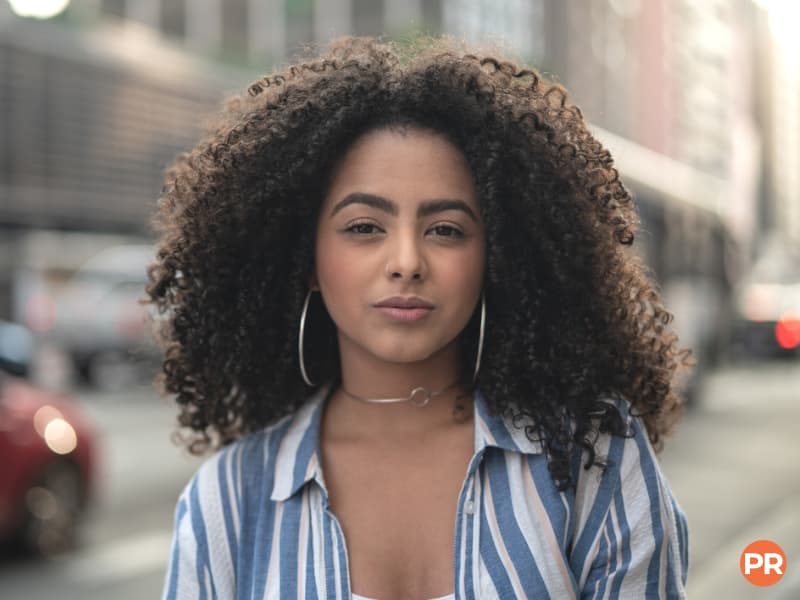
The city offers an urban vibe. Each city has many unique features, giving you plenty of options.
Buildings, cars, streets, lights, and tunnels are all excellent examples.
When capturing urban headshots, use a wide aperture to blur the background. It keeps the focus on your subject.
An urban background is ideal for someone working in the city or with a busy schedule.
Bright or bold color background
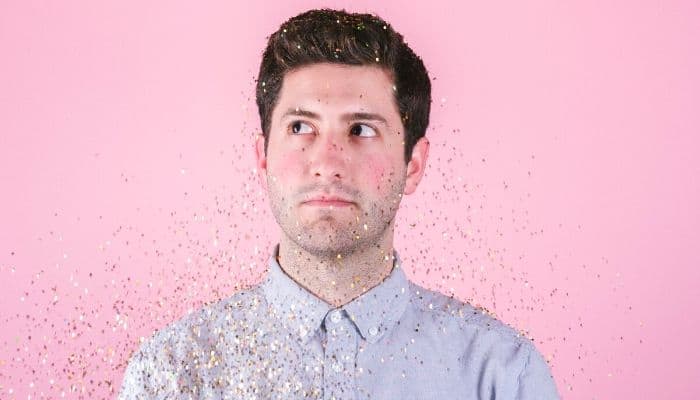
Use a solid color background if you want something bolder than white, black, or grey.
Classic options include blue, red, and green. But you can use any color for a headshot background.
If your subject wants a headshot that’s on brand, full of color, or lively, a solid color background is ideal.
When using a solid color background, your subject must stand out.
So, have your subject wear colors that create a contrast.
You can use color theory to create an eye-pleasing combination.
Workplace background

A workplace background is excellent because it helps tell the subject’s story.
The workplace as a background creates an environmental portrait or headshot. It’s a background that anyone can use.
The setting can be a law firm, school, artist studio, or hospital.
When finding a location, ensure it represents the company well. It should also be free of distractions in the background.
DIY background
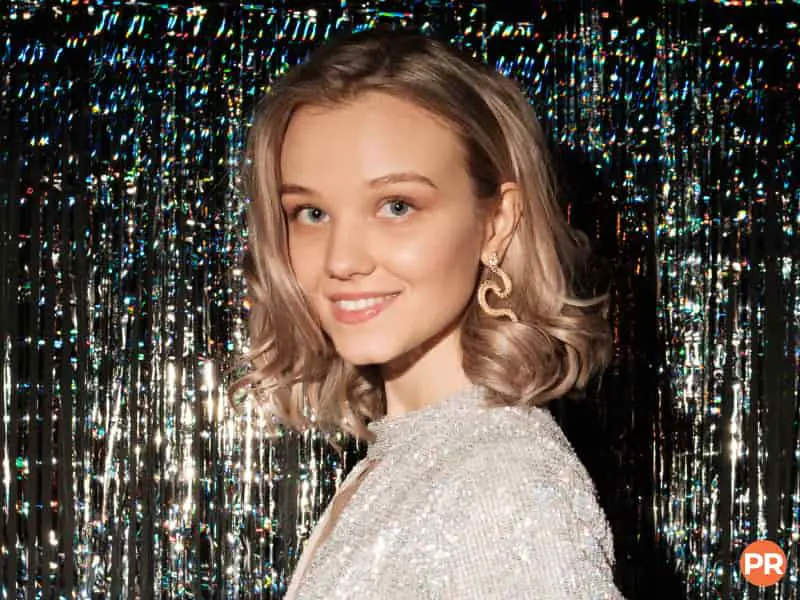
A DIY headshot background is fun, casual, and creative.
While the results may not be for LinkedIn or work, the headshots can be for events and parties.
You can use balloons, streamers, lights, and any other prop to create a mood.
When using a DIY background, music helps to lighten the mood.
It makes your subject more comfortable, resulting in authentic and better headshots.
How to choose the right headshot background
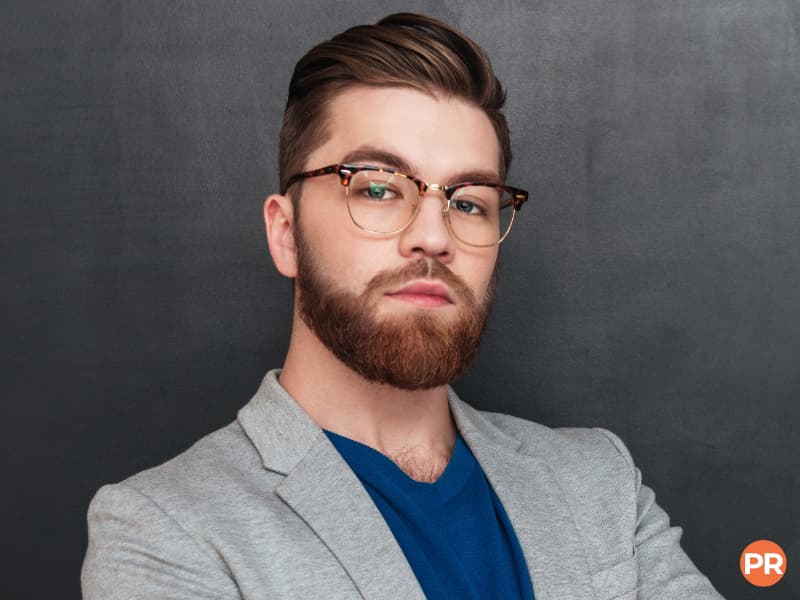
The background is an essential element of a headshot.
Your subject should pop off the background, and there shouldn’t be distracting elements.
The focus of a headshot is the subject. It must make them look flattering and confident.
If you’re taking outdoor headshots, the background must be blurry.
You have more options when you’re taking indoor headshots.
If you’re unsure about the ideal background, use a neutral one, like white, black, or grey.
You can also use a green backdrop and change the color in post-processing.
Ask your subject about their requirements and find what makes them look their best.
Frequently asked questions about headshots and backgrounds
What’s the best color to wear for headshots?
Neutral or solid colors are the best to wear for headshots. A minimal and professional style keeps the focus on the face. It emphasizes facial features and expressions.
Should you smile for headshots?
While there are no rules for smiling in a headshot, the key is to look natural. Avoid a fake smile because it doesn’t look genuine. Capture several photos, some smiling and others with a straight face or light smile. Then, you can choose the one that looks the best.
What should I eat before a headshot?
In the last 24 to 48 hours before a headshot photoshoot, drink lots of water and eat healthy foods. Avoid fatty, greasy, and salty food. It ensures you look your best.
How should I wear my hair for a professional headshot?
Your hair should frame your face, be timeless, and be clean. Avoid trendy or casual hairstyles. Also, consider how you would style your hair for an interview. That’s the best choice for headshots.
Conclusion
The background is an essential part of a headshot.
It depends on a subject’s profession, skin, and clothing color, and the emotions you want to evoke.
The best headshot background enhances your subject. It makes them look flattering and confident.
Related: How to Resize an Image in Photoshop
Featured image courtesy of Unsplash.
